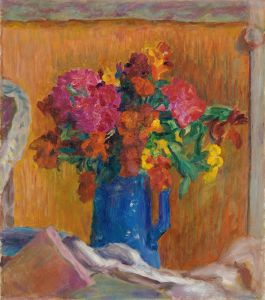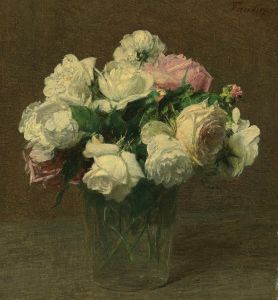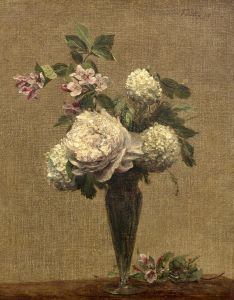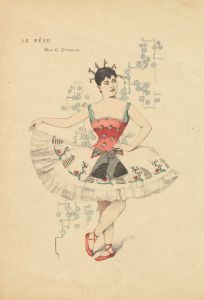
Lilas
A hand-painted replica of Henri Fantin-Latour’s masterpiece Lilas, meticulously crafted by professional artists to capture the true essence of the original. Each piece is created with museum-quality canvas and rare mineral pigments, carefully painted by experienced artists with delicate brushstrokes and rich, layered colors to perfectly recreate the texture of the original artwork. Unlike machine-printed reproductions, this hand-painted version brings the painting to life, infused with the artist’s emotions and skill in every stroke. Whether for personal collection or home decoration, it instantly elevates the artistic atmosphere of any space.
Henri Fantin-Latour, a French painter renowned for his still lifes and portraits, created the painting Lilas (Lilacs) during the 19th century. Fantin-Latour was celebrated for his meticulous attention to detail and his ability to capture the delicate textures and colors of flowers, which became a hallmark of his work. His floral compositions, including Lilas, are considered some of the finest examples of still life painting in the Western art tradition.
The painting Lilas depicts a bouquet of lilac flowers arranged in a simple vase. Fantin-Latour's approach to this subject reflects his characteristic style, emphasizing naturalism and subtle tonal variations. The lilacs are rendered with remarkable precision, showcasing their soft petals and the intricate interplay of light and shadow. The muted background enhances the focus on the flowers, creating a sense of intimacy and tranquility. This restrained and harmonious composition is typical of Fantin-Latour's floral works, which often sought to evoke a quiet, contemplative mood.
Fantin-Latour's still lifes, including Lilas, were highly regarded during his lifetime and remain celebrated today for their technical excellence and timeless beauty. His floral paintings were particularly popular in England, where they were frequently exhibited and purchased by collectors. This international recognition contributed to his enduring reputation as one of the leading still life painters of his era.
While Lilas exemplifies Fantin-Latour's mastery of the still life genre, it also reflects broader trends in 19th-century art. During this period, many artists turned to nature and everyday subjects, seeking to capture their beauty with honesty and precision. Fantin-Latour's work aligns with this movement, demonstrating a deep appreciation for the natural world and a commitment to artistic craftsmanship.
The exact date of creation for Lilas is not specified in available records, but it is consistent with the style and themes Fantin-Latour explored throughout his career. As with many of his floral paintings, Lilas likely served both as a personal artistic exploration and as a work intended for the art market, where such still lifes were in high demand.
Today, Lilas is recognized as part of Fantin-Latour's significant contribution to the still life tradition. His ability to elevate simple floral arrangements into works of art continues to inspire admiration and study among art historians and enthusiasts.


















